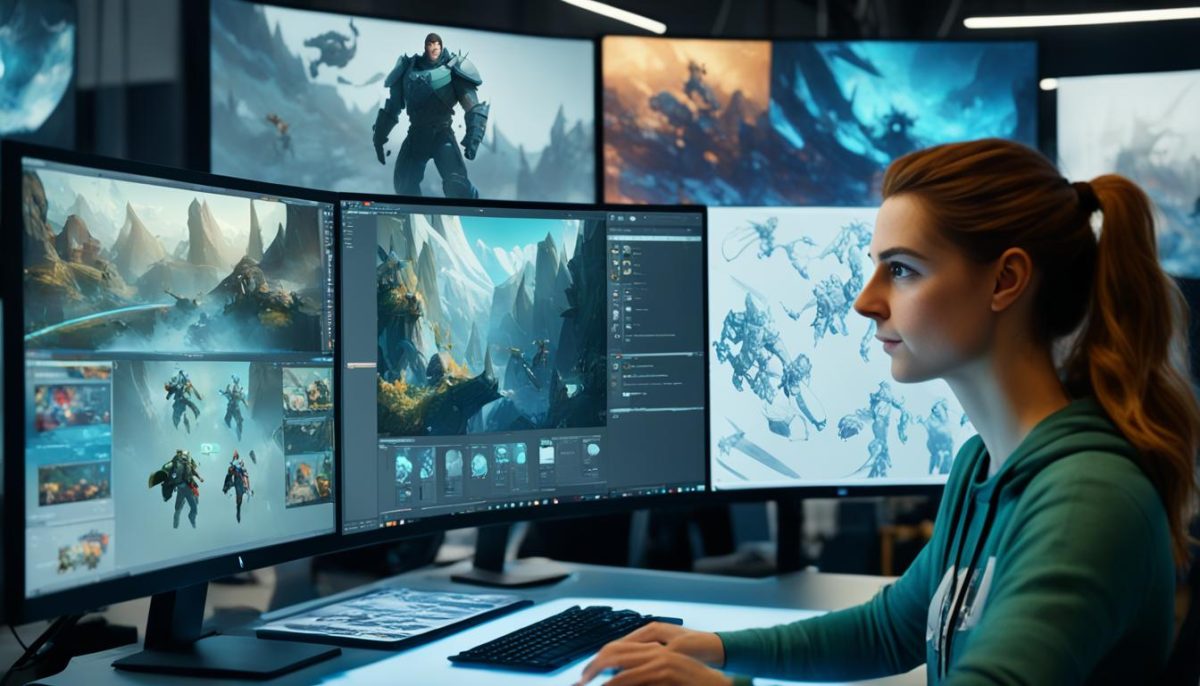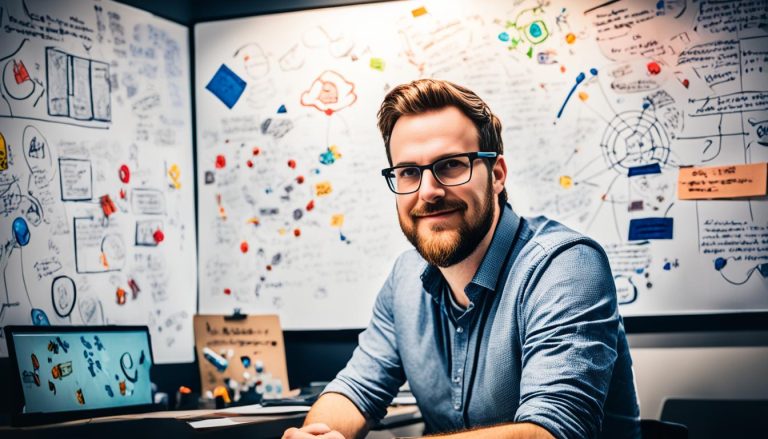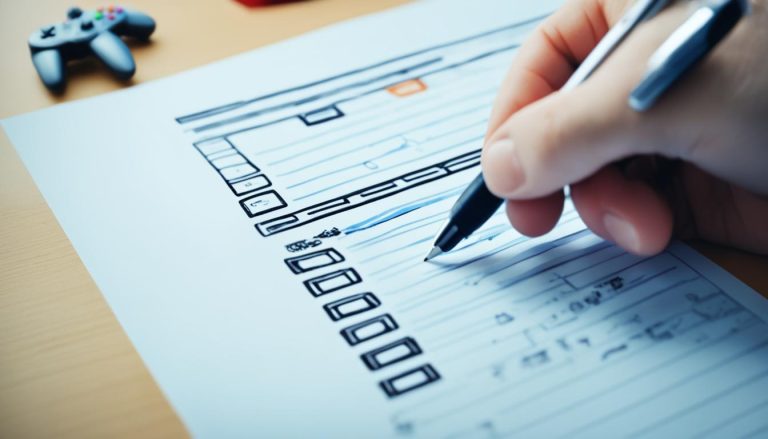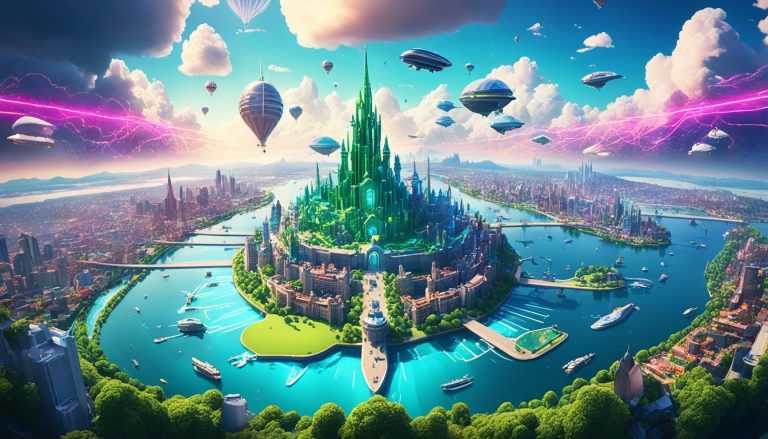What Is Game Animation
Welcome to the exciting world of game animation! In this article, we will explore the fascinating concept of game animation and its significance in the realm of video gaming. Game animation is the art of bringing characters and virtual worlds to life, captivating players and immersing them in gameplay.
Video gaming has evolved drastically over the years, and animation plays a crucial role in enhancing the overall gaming experience. Whether it’s the realistic movements of a protagonist or the vibrant environments that surround them, game animation adds depth, excitement, and realism to the virtual world.
Characters are the heart and soul of any game, and animation breathes life into them. From the subtle facial expressions to the fluidity of their movements, every detail is carefully crafted to engross players in the interactive storyline.
With advancements in technology, game animation continues to push boundaries. The mesmerizing visuals and seamless animations transport players to imaginative realms, blurring the lines between reality and the virtual world.
So, join us as we embark on a journey to explore the role of animation in games, the intricate process behind game animation, and the latest trends and innovations that shape the future of this captivating art form. Get ready to dive deep into the world where characters come to life and gaming experiences are transformed!
The Role of Animation in Games
In the world of video gaming, animation plays a pivotal role in creating immersive and captivating gameplay experiences. Whether it’s bringing characters to life, enhancing storytelling, or adding visual appeal, animation is essential for creating engaging and visually stunning games.
One of the key aspects of animation in games is its ability to enhance storytelling. Through meticulously crafted animations, game developers can effectively convey emotions, plot development, and character interactions. Characters come alive through fluid movements and expressive gestures, allowing players to connect with them on a deeper level.
Furthermore, animation adds visual appeal to games. Intricately designed and animated environments, textures, and effects create a visually captivating experience for players. From breathtaking landscapes to spellbinding spell effects, animation brings the game world to life, immersing players in a visually stunning virtual reality.
“Animation in games serves as a powerful storytelling tool and brings a visual allure that entertains and engages players.” – [INSERT QUOTE SOURCE]
Moreover, animation greatly contributes to the overall gameplay experience. Well-executed animations not only make characters and objects feel more realistic but also impact gameplay mechanics. From the fluidity of character movements to the responsiveness of controls, animation directly influences how players engage with the game, ensuring a seamless and enjoyable experience.
Animation Techniques in Games
Game developers employ various animation techniques to bring their visions to life. Keyframing, a popular technique, involves creating key poses and interpolation between them to achieve smooth and realistic animations. Motion capture, on the other hand, involves recording real-life movements to transfer them onto game characters, adding an extra layer of authenticity.
These animation techniques, combined with advancements in technology, have raised the bar for animation in games, allowing for more fluid, lifelike, and visually stunning experiences.

| Animation in Games | Storytelling | Visual Appeal | Gameplay Experience |
|---|---|---|---|
| Enhances storytelling through expressive character animations and plot development. | Creates visually captivating game worlds, characters, and effects. | Impacts gameplay mechanics, making characters and controls feel more responsive. | Contributes to an immersive and enjoyable gameplay experience. |
| Utilizes animation techniques like keyframing and motion capture to achieve lifelike animations. | Advancements in technology have led to more realistic graphics and animation. | Emerging technologies like virtual reality and augmented reality are shaping the future of game animation. | Responsive animation and seamless integration with gameplay mechanics are of utmost importance in modern games. |
The Process of Game Animation
Game animation is a complex and intricate process that brings virtual worlds and characters to life. In this section, we will explore the various stages and techniques involved in the game animation process, including character design, rigging, keyframing, and rendering.
Character Design
Character design is the foundation of game animation. It involves creating unique and visually appealing characters that resonate with players. Game designers and artists work together to conceptualize and develop characters with distinct personalities, traits, and aesthetics.
The character design process starts with sketches and concept art, which are then translated into 3D models using specialized software like Autodesk Maya or ZBrush. These models serve as the basis for rigging and animation.
Rigging
Rigging is the process of creating a digital skeleton for the characters. It involves defining the joints, bones, and control points that enable realistic movement and articulation. Rigging allows animators to manipulate and pose characters effortlessly, giving them a wide range of motion.
Experienced riggers use sophisticated tools like Autodesk MotionBuilder or Blender to create complex rigs that can accurately replicate the movement of various body parts, facial expressions, and other character features. Rigging is crucial for achieving smooth and believable animations.
Keyframing
Keyframing is a fundamental animation technique used to create motion sequences and performances for characters. It involves defining key poses or frames at specific points in time and allowing the software to interpolate the movement between these keyframes.
Animators use keyframes to establish the starting and ending positions of a movement, as well as the timing and trajectory of transitions. This process gives the animation a natural flow and rhythm. Keyframing techniques vary depending on the desired animation style and the complexity of the character’s movements.
Rendering
Rendering is the final step in the game animation pipeline. It involves the conversion of the 3D models and animation data into a finished, visual output. Rendering adds lighting, textures, and effects to create a realistic and immersive environment.
Powerful rendering software like Pixar’s RenderMan or Chaos Group’s V-Ray is used to generate high-quality images and videos. The rendering process can be time-consuming, especially for complex scenes and high-resolution graphics, but it’s essential for delivering captivating visuals that enhance the overall gaming experience.

Throughout the game animation process, animators rely on specialized software and technologies to bring their creative vision to life. 3D modeling software, game engines, and other tools play a vital role in streamlining workflow and achieving desired results.
With a sound understanding of character design, rigging, keyframing, and rendering, game animators have the ability to create immersive and visually stunning experiences that captivate players and elevate the overall enjoyment of video games.
Trends and Innovations in Game Animation
As technology continues to advance, game animation has reached new heights, offering more realistic graphics and captivating experiences for players. The latest trends in game animation emphasize innovation and immersion, bringing virtual worlds to life like never before.
One of the most significant advancements in game animation is the integration of virtual reality (VR) and augmented reality (AR). VR allows players to step into the game world, experiencing it from a first-person perspective and feeling truly immersed. On the other hand, AR overlays virtual elements onto the real world, creating a unique blend of real and virtual gameplay. These technologies open up endless possibilities for game animation, enhancing the level of interactivity and creating more engaging experiences.
Another trend in game animation is the focus on realistic graphics. Sophisticated rendering techniques and improved hardware capabilities have made it possible to create visually stunning games with lifelike characters and environments. With the advancement of real-time rendering engines, developers can achieve cinematic-quality visuals in games, captivating players with breathtaking scenes and detailed animations.
Furthermore, the emergence of procedural animation has revolutionized game development by allowing for dynamic and adaptive animations. Procedural animation techniques generate animations on the fly, responding to the player’s actions and interactions. This not only enhances the realism of character movements but also enables more intelligent and lifelike behaviors within the game world.







